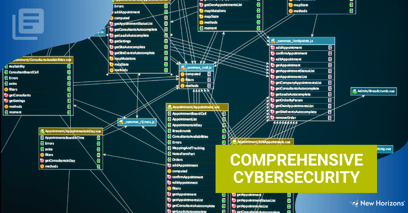
Among the different types of computer applications, web applications are unusually exposed to attacks by hackers. First, they must be connected to the internet, making them an easily reachable target. Hackers prefer to sit thousands of miles away, preferably in a place with no extradition to the U.S., while compromising your web application security completely uninhibited.
Second, web apps must allow anonymous inbound HTTP requests, so an attack surface is always exposed. Even apps that require registration and login must accept anonymous login requests.
Third, a wide range of known exploits (code vulnerabilities) and common web app programming errors make many web apps easy pickings. One unpatched service program or sloppily coded module can leave the web app wide open to attack.
Effective web application security must be an end-to-end concern, starting with the creation and management of the development environment (code editing, code repositories, and DevOps), continuing through the setup and administration of the deployment environment (servers, cloud service, or container runtime) and extending into the code itself. The modern concept of “Shift Left” security means that participants at every stage of the software delivery pipeline are responsible for overall security, not just their part of the pipeline.
1. Development Environment Security
If the environment in which code is written, stored, and built is not secure from hackers the resulting code can never really be secure. Attacks such as SolarWinds, where malware was inserted into the build process and then distributed to over 18,000 customers in a product update, have shown the devastating results that can occur from breaches of dev environment security.
2. Deployment Environment Security
If a hacker can penetrate and gain control of the deployment environment (server, cloud service, etc.) in which a web application runs, the app can never be secure. Security measures taken by the developers in their code can be disabled or bypassed if the hacker has free run of the deployment environment.
3. Application (Code) Security
Many web app developers are content simply to build an app that runs and are unconcerned or unaware of the many potential security problems they may have left in their code. Secure coding takes knowledge and time. Resources from organizations such as the Open Web Application Security Project (OWASP.org) can help, but they must be applied.
Web Application Security Best Practices
Unfortunately, there's not yet a way to make any web technology completely invulnerable to hackers and cybercrime. Cyber attacks continue to evolve every day, resulting in a need to be constantly improving and implementing new cybersecurity measures. This concept can be overwhelming for any cybersecurity team, no matter how big or small. That's why we've created a free ebook to help you design a comprehensive cybersecurity plan.
Click here to download the ebook. >>
